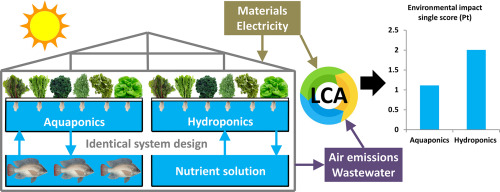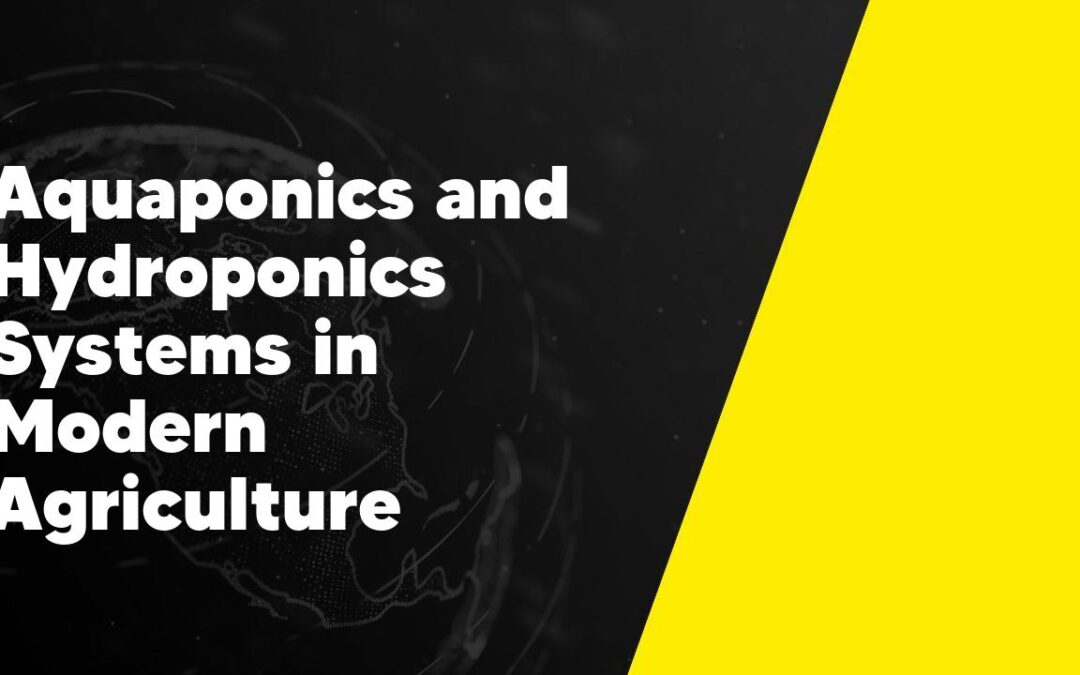Aquaponics and hydroponics are two innovative systems that have emerged in modern agriculture as solutions to the challenges faced by traditional farming methods. Aquaponics combines aquaculture (fish farming) and hydroponics (soil-less plant cultivation) in a mutually symbiotic relationship where fish waste provides nutrients for the plants, and the plants act as natural filters for the water. Similarly, hydroponics allows for the precise control of nutrient delivery to plants, resulting in higher yields and reduced water usage compared to traditional soil-based farming.
1. What is Aquaponics?
Aquaponics is an innovative and sustainable farming method that combines aquaculture and hydroponics. It works by creating a symbiotic relationship between fish and plants, where the waste produced by the fish is used as nutrients for the plants. The fish waste is converted into nitrate by beneficial bacteria, which is then absorbed by the plants as fertilizer. In return, the plants filter the water for the fish, creating a closed-loop system that requires very little water and eliminates the need for chemical fertilizers. Aquaponics offers numerous benefits, such as increased food production, water conservation, and the ability to grow a wide variety of crops in a small space. It is a promising solution for sustainable farming and has gained popularity in recent years.
2. What is Hydroponics?

Hydroponics is an innovative method of growing plants without using soil. Instead, plants are grown in nutrient-rich water solutions that provide all the necessary elements they need to thrive. This technique allows for precise control over the growing conditions, including temperature, pH levels, and nutrient concentrations, ensuring optimal plant growth. With hydroponics, plants can be grown in a controlled environment, such as a greenhouse, which allows for year-round production and eliminates the reliance on weather conditions. Additionally, this method uses significantly less water compared to traditional farming methods, making it more sustainable and environmentally friendly. Hydroponics is gaining popularity due to its efficiency, higher yield potential, and ability to grow plants in urban areas with limited space.
3. The Benefits of Aquaponics in Modern Agriculture
Aquaponics is a revolutionary method in modern agriculture that brings together the principles of aquaculture and hydroponics. As someone who is deeply passionate about sustainable farming practices, I have come to appreciate the numerous benefits that aquaponics offers. Firstly, it is an incredibly efficient system that maximizes the use of resources. By utilizing fish waste as a natural fertilizer for plants, aquaponics eliminates the need for chemical fertilizers. This not only reduces environmental pollution but also ensures that the produce is free from harmful chemicals. Additionally, aquaponics requires significantly less water compared to traditional farming methods, making it a water-saving solution for regions facing water scarcity. Overall, aquaponics is a game-changer in modern agriculture as it promotes sustainable practices while delivering high-quality, fresh produce.
4. The Benefits of Hydroponics in Modern Agriculture
In my opinion, hydroponics has revolutionized modern agriculture by providing numerous benefits for farmers and consumers alike. First and foremost, this innovative growing technique allows for the cultivation of plants in a controlled environment, eliminating the need for soil. This means that crops can be grown in any location, regardless of the quality of the soil or the climate conditions. Additionally, hydroponics reduces water usage by up to 90% compared to traditional farming methods. This is a crucial advantage in regions affected by droughts or limited water resources, as it helps conserve this precious natural resource. Furthermore, hydroponics enables the production of higher yields in a faster timeframe, as plants receive optimal amounts of nutrients and are not restricted by environmental factors such as pests or diseases. Ultimately, the adoption of hydroponics in agriculture not only ensures a more sustainable and efficient food production system, but also offers the potential for increased access to fresh and nutritious produce for all.
5. Comparing Aquaponics and Hydroponics: Similarities and Differences
When comparing aquaponics and hydroponics, it is important to understand the similarities and differences between the two systems. Both aquaponics and hydroponics involve growing plants without the use of soil. They both rely heavily on water and nutrients to support plant growth. However, the main difference between the two lies in the source of nutrients. In aquaponics, fish waste provides the necessary nutrients for the plants, while in hydroponics, nutrients are manually added to the water. Additionally, aquaponics is a more sustainable and self-sufficient system as it combines fish farming with plant cultivation, creating a symbiotic relationship between the two. On the other hand, hydroponics offers more control over nutrient levels and pH, allowing for precise customization of the plant’s growing environment. Overall, both aquaponics and hydroponics have their advantages and disadvantages, and choosing the right system depends on the specific needs and goals of the gardener.
6. The Future of Aquaponics and Hydroponics in Sustainable Agriculture
The future of aquaponics and hydroponics in sustainable agriculture is promising. These innovative farming techniques have gained traction in recent years due to their ability to produce high yields of crops while using minimal resources. As someone who is passionate about sustainable farming, I believe that aquaponics and hydroponics have the potential to revolutionize the way we grow food. These systems allow for year-round production of fresh vegetables and fish in a controlled environment, reducing the need for traditional farming methods that often rely on harmful pesticides and rely heavily on irrigation. With further research and advancements in technology, aquaponics and hydroponics could become the go-to solution for sustainable agriculture, ensuring that we can continue to feed our growing population without depleting our natural resources.
Conclusion
In conclusion, both aquaponics and hydroponics systems have emerged as innovative and sustainable alternatives in modern agriculture. While aquaponics combines the benefits of aquaculture and hydroponics, allowing for the growth of fish and plants in a symbiotic relationship, hydroponics focuses solely on plant cultivation in nutrient-rich water. These systems offer numerous advantages such as water conservation, efficient space utilization, and reduced reliance on traditional soil-based farming methods, making them valuable tools in achieving a more sustainable and resilient agricultural future.
What is aquaponics?
Aquaponics is a method of cultivating plants and fish together in a recirculating environment. It involves the symbiotic relationship between aquatic animals and plants, where fish waste provides nutrients for the plants while the plants filter and clean the water for the fish.
What is hydroponics?
Hydroponics is a method of growing plants without soil. Instead, plants are grown in a nutrient-rich water solution that provides all the necessary nutrients for their growth. This method allows for precise control over the plant’s environment, resulting in faster growth and higher yields.
What are the advantages of aquaponics?
Aquaponics has several advantages over traditional farming methods. It requires less water compared to conventional agriculture, as the water is recycled within the system. It also eliminates the need for synthetic fertilizers, as the fish waste serves as a natural nutrient source for the plants. Additionally, aquaponics systems are highly scalable and can be set up in urban areas, making it a viable solution for sustainable food production.
What are the advantages of hydroponics?
Hydroponics offers several advantages compared to traditional soil-based agriculture. It allows for the precise control of nutrient levels, pH, and other environmental factors, resulting in faster and more efficient plant growth. It also eliminates the risk of soil-borne diseases and pests and requires less space since plants can be grown vertically. Hydroponics also requires less water compared to traditional farming methods.
Can aquaponics and hydroponics be combined?
Aquaponics and hydroponics can be combined into a system called aquaponic-hydroponic hybrid. In this system, fish waste from the aquaponics system is used as a nutrient source for the hydroponics system, creating a closed-loop system where the waste from one component benefits the other. This hybrid system maximizes the efficiency of nutrient utilization and allows for the cultivation of a wider variety of plants.
Are aquaponics and hydroponics sustainable methods of farming?
Aquaponics and hydroponics are both considered sustainable methods of farming. They use less water, require no synthetic fertilizers, and can be set up in urban areas, reducing the need for transportation of

